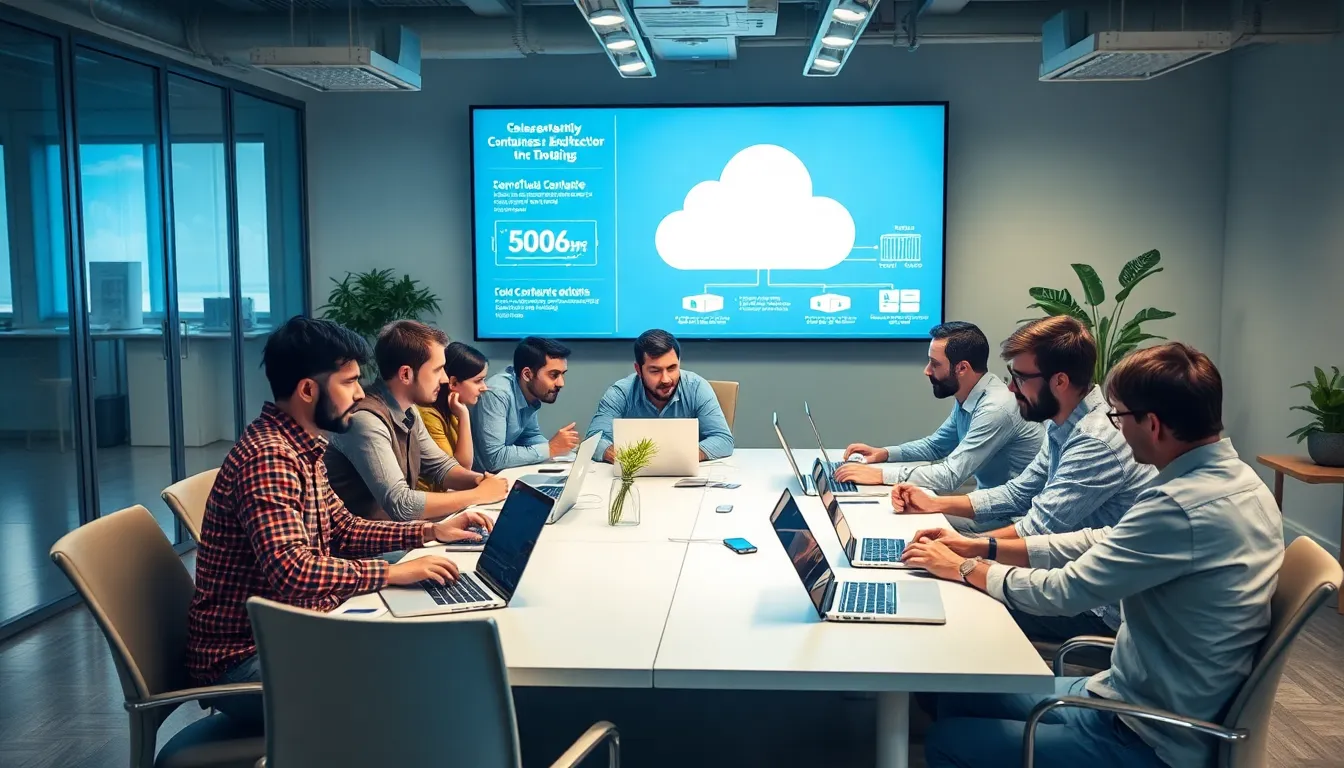In a world where software evolves faster than a cat meme goes viral, staying updated on the latest trends is crucial. From AI-powered tools that make life easier to cloud solutions that promise to save the day (and your data), the software landscape is buzzing with innovation. Whether you’re a tech guru or just someone who struggles with turning on their computer, understanding these trends can give you a competitive edge.
Table of Contents
ToggleOverview Of Latest Software Trends
Understanding the latest software trends is essential for businesses and developers alike. AI-powered tools dominate discussions, offering features that significantly enhance productivity and decision-making. Cloud solutions continue to expand, providing scalable options that accommodate growing data needs.
Low-code and no-code development platforms gain traction, enabling users with minimal coding experience to create applications efficiently. As digital transformation accelerates, software integration emerges as a focal point, streamlining processes across various systems.
Cybersecurity remains a top priority, as the frequency of data breaches increases. Companies invest in advanced security protocols and tools to protect sensitive information. Agile methodologies also gain popularity, allowing teams to adapt quickly to changing requirements and improve project delivery.
DevOps practices promote collaboration between development and operations teams, leading to faster software releases and enhanced product quality. The trend of remote work has prompted the rise of collaboration tools, enabling teams to communicate effectively from different locations.
Blockchain technology, once exclusively tied to cryptocurrencies, now garners interest for its applications in diverse sectors, including supply chain management and identity verification. Additionally, augmented reality and virtual reality tools are emerging in software development, providing innovative ways to engage users.
Staying informed about these trends enhances competitive advantages, regardless of technical expertise. Companies that embrace these advancements position themselves favorably in the dynamic software landscape.
Cloud Computing Innovations

Cloud computing continues to reshape the software landscape through innovative solutions designed to enhance efficiency and scalability. Key advancements make it simpler for businesses to optimize resources while reducing overhead costs.
Serverless Architecture
Serverless architecture allows developers to run applications without managing servers. This approach enhances efficiency by automatically scaling resources based on demand. Companies benefit from reduced operational costs, as they pay only for the compute time consumed. With serverless computing, developers focus on code rather than infrastructure logistics. Platforms like AWS Lambda and Azure Functions exemplify this trend, providing flexible environments for rapid deployment.
Containerization Advancements
Containerization advancements streamline application deployment by isolating software in containers. A container ensures that applications run consistently across various environments, reducing compatibility issues. Docker and Kubernetes lead in this space, offering tools that simplify orchestration and management. Container orchestration automates scaling and monitoring, enabling businesses to respond quickly to changing demands. These technologies enhance development efficiency, facilitating continuous integration and delivery.
Artificial Intelligence In Software Development
Artificial intelligence (AI) significantly transforms software development, impacting various aspects. The integration of AI capabilities enhances efficiencies, streamlines processes, and improves user experiences.
Machine Learning Integration
Machine learning (ML) empowers developers to create intelligent applications capable of learning from data patterns. Organizations use ML algorithms to enhance predictive analytics, improving decision-making. These algorithms can process large datasets quickly, identifying trends and insights that manual analysis might miss. For instance, automated testing tools utilize ML to detect bugs and optimize code quality, speeding up the development lifecycle. Companies increasingly incorporate ML into their applications, boosting functionality and competitiveness.
Natural Language Processing Applications
Natural language processing (NLP) revolutionizes how software interacts with users. By analyzing and interpreting human language, NLP technology enables applications to understand user intent better. Chatbots serve as one of the most prominent NLP applications, facilitating seamless customer support and engagement. With advancements in NLP, software can provide more intuitive interfaces, making it accessible to a broader audience. As businesses invest in NLP solutions, they enhance user satisfaction and operational efficiency.
DevOps And Agile Methodologies
DevOps and agile methodologies play a crucial role in modern software development, emphasizing collaboration and efficiency. These practices enhance the ability to respond to market changes while maintaining high-quality standards.
Continuous Integration And Continuous Deployment
Continuous integration (CI) and continuous deployment (CD) streamline the development process by automating code integration and deployment. With CI, developers frequently merge code changes into a shared repository, triggering automated testing to identify issues early. CD extends this practice, allowing applications to be released to production automatically after passing tests. These approaches reduce manual errors, improve collaboration, and shorten release cycles, ultimately leading to more reliable software delivery and faster time-to-market.
Agile Project Management Techniques
Agile project management techniques foster adaptability and responsiveness in software projects. Scrum, Kanban, and Lean are popular frameworks that prioritize iterative progress, collaboration, and flexibility. Scrum organizes work into time-boxed sprints, facilitating regular feedback and adjustments based on stakeholder input. Kanban visualizes workflow through boards, enabling teams to manage tasks efficiently while identifying bottlenecks. Emphasizing continuous improvement, agile techniques enhance team dynamics, ensure project alignment with business goals, and support swift adjustments to changing requirements.
Cybersecurity Trends
Staying ahead in cybersecurity requires understanding current trends. These trends shape how businesses protect their data and systems.
Zero Trust Security Models
Zero Trust Security Models emphasize strict identity verification for every person or device trying to access resources. Organizations implement this approach regardless of whether users operate from inside or outside the network perimeter. Continuous authentication enhances safety and reduces the risk of data breaches. By segmenting access to sensitive information, businesses also limit potential damage from cyber attacks. The increasing complexity of cyber threats drives the adoption of Zero Trust frameworks, pushing companies to reassess their traditional security strategies.
AI-Powered Threat Detection
AI-Powered Threat Detection systems utilize machine learning algorithms to identify patterns and anomalies in network traffic. By analyzing vast amounts of data, these systems can detect unusual behaviors that may indicate cyber attacks. Organizations benefit from faster response times to potential threats, enhancing overall network security. Continuous learning capabilities allow these AI systems to adapt to evolving threats, making them more effective over time. As cyber threats become more sophisticated, leveraging AI for threat detection significantly improves the resilience of businesses against attacks.
Staying ahead in the software industry requires embracing the latest trends and innovations. As businesses adapt to the rapid changes in technology it’s essential to leverage tools like AI and cloud solutions. The rise of low-code platforms and agile methodologies empowers teams to enhance productivity while maintaining quality.
Cybersecurity remains a top priority as threats evolve and organizations must implement robust strategies to safeguard their data. By integrating DevOps practices and adopting advanced technologies like blockchain and VR, companies can streamline processes and improve user experiences.
Ultimately the future of software development is bright for those willing to invest in these emerging trends. Embracing these changes not only fosters growth but also ensures a competitive edge in an ever-evolving landscape.



